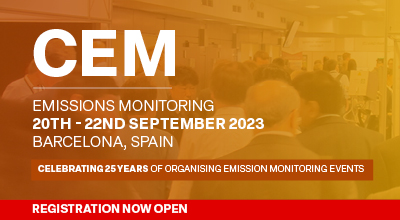| Abstract Title: | Standardisation of air quality sensor-based systems: Progress and challenges |
| Presenter Name: | Dr Edurne Ibarrola Ulzurrun |
| Co-authors: | Mr Javier Fernandez Huerta |
| Company/Organisation: | Kunak Technologies |
| Country: | Spain |
Abstract Information :
Air quality sensor-based systems provide an excellent option to complement the official air quality networks. These air quality devices are lower in cost, easier to use and less bulky than traditional instruments. Over the past decade, there has been a worldwide effort to evaluate the usefulness and possible applications of air quality device technology. Performance evaluation projects have focused on determining the quality of the data produced by sensor-based systems. Several independent and foundational evaluation efforts are occurring in Europe and the U.S. This is the case of the U.S. Environmental Protection Agency (EPA), the Air Quality sensor performance evaluation center (AQ-SPEC) program, and the AIRLAB Microsensor Challenge organized by AIRPARIF. Kunak has participated in all these evaluations, awarded as the most accurate multi-pollutant sensor in Airlab Challenge 2021. These evaluations were the first attempt to show independent performance assessments of sensor systems. However, there were not enough for final users, showing the lack of an internationally accepted standard protocol that allows comparing the performance of instruments in different evaluation studies. Thus, being aware of this issue, we started as a member group of the CEN Technical Committee 264, Working Group 42, which launched in 2021 a Technical Specification for the performance requirements and test methods for low-cost gas sensors. UNE-CEN/TS 17660-1:2021 “Air quality - Performance evaluation of air quality sensor systems - Part 1: Gaseous pollutants in ambient air”. The second part, related to particle sensors is still under development. We, as manufacturers of air quality devices, are contributing with knowledge and experience, as well as being up to date with the latest innovations in the sector. It is important to promote the development of this standardisation, without falling into the error of being more restrictive than the protocols for reference analyzers due to the lack of confidence in this type of technology. UNE-CEN/TS 17660-1:2021 is still under validation, so the first certifications will take still some time. Thus, other certification bodies created certifications to evaluate those air quality sensor systems to provide an official assessment of their performance. Some examples are MCERTS Certification for Indicative Ambient Particulate Monitors in the UK and INERIS Certification of sensors systems for air quality monitoring in France. Kunak, after having participated in different independent evaluations, notices the necessity to go through a certification process when working with public organizations. Thus, in 2023 Kunak got the MCERTS Certification for indicative particles. In conclusion, a lot of work has been done in the last years regarding sensor systems regulation that has allowed consumers to understand the use of the devices, the performances, as well as their advantages and disadvantages. However, the work has not finished yet. Independent evaluations should have more precise methodology and protocols in terms of evaluation periods, ambient conditions and accuracy assessment. Besides, official regulatory standards must be aware that sensor systems will be a tool to complement the official regulatory network, with a technology lower in cost, so are not expected to perform as well as reference instruments. Thus, the requirements should be according to the technology and applications in which they are used.

